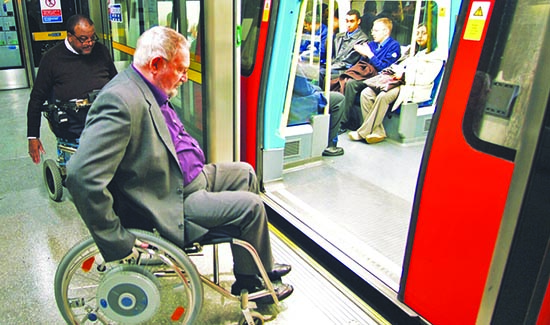 EUROPEAN Mobility Week gets into gear today (September 16). The aim is to get people thinking about the range of transport options available, and to choose the right mode when travelling. But that’s not easy if you have a disability, says PHILIPPA WILLITTS (pictured right)
EUROPEAN Mobility Week gets into gear today (September 16). The aim is to get people thinking about the range of transport options available, and to choose the right mode when travelling. But that’s not easy if you have a disability, says PHILIPPA WILLITTS (pictured right)
The idea is that we might get into a rut and always use the same mode of transport, whether that’s a car, a bus or a bike.
The campaign’s aim is to get people to try new approaches – why not cycle to work today? Or take the bus instead of the train
The organisers also want travellers to look at the environmental impact of their travelling choices, promoting an annual Car-Free Day.
These are laudable goals, but is it really this simple?
For many people, especially those who are disabled or who don’t live in towns and cities, the available options can be incredibly limited.
Hopping onto a traditional bicycle may not be physically possible, while a daily bus meandering through rural Cumbria is not easily substituted by an alternative method of transport when there are no alternatives available.
While public transport accessibility is improving, there is still a long way to go before disabled people have equal access to travel facilities.
As long as some buses still have steps, and many train stations have no level access, a disabled person’s ability to chop and change their transport preferences is significantly impaired. In fact, being able to make any simple journey is far from guaranteed; they may have no alternative travel options whatsoever.
Living near the city centre in Sheffield, I am lucky to have access to a choice of public transport options.
The Supertram is generally accessible and runs close to my home, and I have a choice of local buses that don’t have steps and do have the ability to ‘kneel’. I can get the tram to the city centre and the bus home, or vice versa, and make the choice based on whatever is most convenient at the time.
In some other areas of the city, however, disabled people are not so lucky, as some bus routes are stocked with older buses that have steps. And while buses now have spaces for wheelchair users, they can usually only carry one or two at any given time. So, if I relied on a wheelchair to get around, I would have further limitations in my way.
Tanvi Vyas, from Muscular Dystrophy UK’s Trailblazers campaign, says:
“Often, people are used to using particular modes of transport and are comfortable with them. Once they have an adapted car, they know that it’s easier to get from A to B, and are less likely to explore other options.”
Similarly, people who use a particular bus or train route can face problems if they change them, whether that is due to their own familiarity, or relationships with staff at stations.
Tanvi believes that, “In an ideal world, everything would be totally inclusive and accessible and you could hop from one mode from another. But we’re not there yet.”
So how could European Mobility Week’s ‘multimodality’ concept become a realistic option for disabled people in the UK? Is it possible to get to a position where we have as many possibilities for getting around as non-disabled people do?
Gerry Bucke, from Chartwell, a specialist insurance provider and advocate for improved mobility for people with disabilities, believes that things are changing for the better.
“While there are still issues for disabled people accessing public transport, progress is being made and an increase in accessible vehicles and stations could make all the difference to those who want to have more choice in the way they get around.”
Work is ongoing to phase out inaccessible buses and make trains and stations more usable. It can feel like slow progress when somebody wants to make a journey and is frustrated by barriers and obstacles, but groups campaigning for public transport accessibility are working hard with transport providers and local authorities to effect change.
For disabled people who want to cycle, there are also new possibilities.
Campaigns like Disability Cycling, Wheels for Wellbeing, and the National Cycling Charity’s Inclusive Cycling work to encourage disabled people to try out this mode of transport, providing specialist, adapted cycles and lots of information and encouragement to enable disabled people to get around on two (or three, or four) wheels independently.
The aims of European Mobility Week are sound, and reducing society’s reliance on cars can only be a good thing. But for disabled people there are complexities and obstacles that may not have been fully addressed by the campaign. Working with accessibility campaigners could create a more inclusive project, highlighting the real barriers that we face in multimodality in transport.


